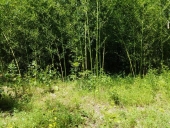Hi everyone,
Thanks so much for your feedback, your own experiences, it's always helpful.
I've done quite a bit more research into this and am amazed how much debate there seems to be on forums and things when there's actually been really good studies into borax on wood - you just have to find them!
The results that I can see is that borax is a pretty effective wood preservative and fire-retardant as long as it is not constantly exposed to the leaching of water.
Based on my findings it seems that borates either have no effect, or actually improve the structural strength of wood. Good protection from insects and fungi, although perhaps not moulds. Low toxicity to humans. A slight drawback that it can blunt blades a little faster than untreated wood!
Firstly wood strength! :
This study experimented on the effect of borax on bamboo, and I assume the results could also be applied to wood:
https://www.researchgate.net/publication/347109744_The_Effect_of_Borax_Solution_as_Preservative_to_the_Mechanical_Properties_of_Bamboo
This excellent study from 2020 concluded that:
"This study indicated that 30% to 50% borax in the preservative solution is sufficient to provide significant
increase in strength for compressive strength, tensile strength, and bending strength of bamboo specimen."
(Great study - I'm just slightly puzzled about how one could achieve a 50% borax solution in cold conditions, am I misunderstanding something?!)
More research on borates (including boric acid) for timber preservation from Australia in 2004, contains lots of findings from many other studies, encompassing a lot of helpful information:
https://www.researchgate.net/publication/328600265_Treatment_Methods_for_the_Protection_of_Hardwood_Sapwood_from_Lyctine_Borers
"Boron has a number of advantages as a wood preservative... Borates are relatively inexpensive, colourless, non-flammable, and can be applied by a variety of methods, ranging from cheap dip tanks to sophisticated VPI plants...
Boron also has sound health, safety and environmental credentials (not withstanding the directive from
Sweden mentioned above), as it has low toxicity to mammals, and low environmental impact
(Currie, 1997). "
"Borates are generally effective against sapstain fungi. However, at the levels normally used
commercially, borates do not protect timber from surface moulds. " (Amburgey, 1990)
"Boron treatment has no significant effect on the strength of timber" (Anon., 1994).
"Boron treated timber will blunt saw blades more quickly than untreated timber" (Davis and Norton, 1995).
"Provided the treated timber is dried to a moisture content below 18%, borate treatment should have no adverse effect on painting" (Anon.., 1994).
"Borate treated wood can affect phenol formaldehyde glues, but most other glues seem to be
compatible." (K. Lyngcoln, pers. comm., 1996)
Cold water soaking:
"It usually involves soaking in 3 to 4.5% borax for 12-14 days (Johnstone and Humphreys, 1972). The length of time needed to treat timber by soaking depends on timber species and thickness. As a general rule for 4.5% borax solutions at 18C, timber of 2.54 cm thickness requires seven days soaking, while timber of
3.81 cm thickness requires 14 days soaking" (Davis and Norton, 1995).
There's loads more information in both of those studies quoted about the preservation powers of borax. As long as the wood is not being exposed to water constantly, I'm very encouraged that borax is a sound, environmentally friendly method of treating wood.








